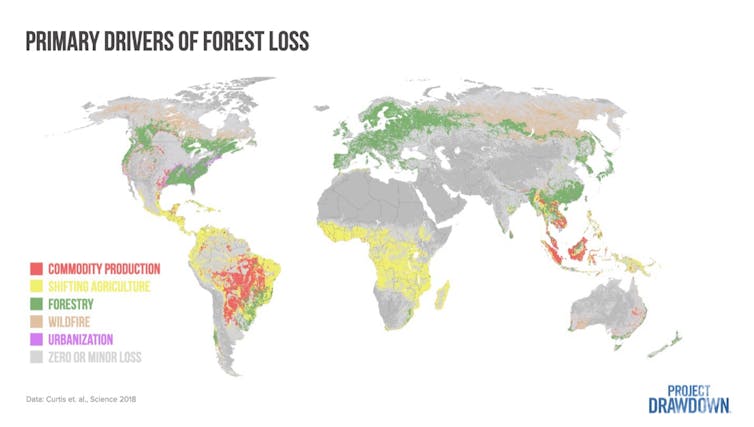Source: The Conversation – (in Spanish) – By Lidia Arroyo Navajas, Docente Facultad de Educación, Universidad Internacional de Valencia
El trastorno del espectro autista (TEA) es una condición del neurodesarrollo definida por dificultades en la comunicación e interacción social, así como comportamientos e intereses restringidos y repetitivos. Se presenta en una amplia variedad de formas y suele afectar al procesamiento sensorial (hiper o hiporreactividad). En España, más del 1 % de escolares, entre infantil, primaria y secundaria, están diagnosticados.
Los niños y niñas con este trastorno tienen dificultades en la adaptación a la escuela. La falta de formación específica del profesorado y el personal escolar, y la falta de recursos adecuados y sensibilidad institucional impiden que se atienda de manera adecuada a las necesidades sensoriales, emocionales y de apoyo individualizado que requieren estos escolares.
A continuación explicamos algunos errores comunes en la atención a estos alumnos en el seno de los centros escolares ordinarios.
Firmeza mal entendida: más ansiedad y rechazo
Existe cierta confusión entre las “pataletas” (explosiones emocionales debidas a la sobrecarga sensorial o emocional) y las conductas maleducadas o desafiantes.
En el alumnado autista son frecuentes las crisis de desregulación (meltdown, pataleta, o shutdown, ensimismamiento), respuestas no voluntarias a la sobrecarga sensorial o emocional. Cuando el profesorado no está formado en autismo, tiende a leer la desregulación como desobediencia.
Esto conduce a recomendaciones hacia las familias de “ser más firmes” o “no ceder”, reforzando un enfoque conductista que resulta contraproducente. El trastorno del espectro autista suele coincidir con la ansiedad y la depresión: reaccionar con castigos o riñas puede agravar estos comportamientos, aumentando la angustia del menor y generando rechazo profundo hacia la escuela.
Leer más:
Herramientas digitales para estudiantes con autismo
Algunas madres con las que hablo en mi consulta relatan que tardan más de dos horas cada mañana en lograr que su hijo se vista y salga de casa. Esta resistencia no es fruto de desobediencia, sino de ansiedad provocada por entornos que los niños con esta neurodivergencia experimentan como inseguros y abrumadores.
Es fundamental entender que muchos niños con autismo no obedecen, se levantan de la silla o intentan salir del aula no para desafiar, sino porque no entienden lo que ocurre o existe una sobreestimulación sensorial que el adulto no percibe. Por ejemplo, tras un ruido intenso o un cambio imprevisto, el alumno puede taparse los oídos, gritar o esconderse; en lectura silenciosa, en cambio, puede bromear para llamar la atención aun sin señales de sobrecarga.
Para intervenir de forma ajustada, ante señales de sobrecarga conviene reducir estímulos, permitir una pausa breve en un lugar tranquilo (muchas escuelas ya cuentan con un “rincón de la calma”), ofrecer auriculares y usar instrucciones cortas y literales. Es útil anticipar los cambios con apoyos visuales, dar tiempo de transición, desglosar las tareas en pasos pequeños y permitir elegir entre dos opciones equivalentes. Resulta práctico pactar una señal sencilla para pedir pausa o ayuda y reforzar de forma específica las conductas adecuadas cuando aparecen.
No aceptar el uso de auriculares
Las aulas ordinarias están diseñadas para un perfil neurológico estándar, y a menudo, como ocurre en España en las aulas de secundaria, hay un número de alumnos muy elevado, hasta 30 por clase. Para el alumnado con hipersensibilidad sensorial, frecuente en los trastornos del espectro autista, estos espacios pueden resultar insoportables por los ruidos constantes, reverberaciones, luces fluorescentes, olores intensos, falta de espacios de calma. Esta sobreestimulación genera desregulación, fatiga y conductas de huida.
Los docentes deben permitir que estos estudiantes acudan al aula con auriculares provistos de cancelación activa de ruido, pues constituyen un ajuste sensorial básico para mitigar la sobrestimulación. Aunque el reglamento de régimen interno del centro prohíba el uso de auriculares durante el horario lectivo, hay que tener en cuenta que en el caso de los estudiantes con autismo debidamente diagnosticados no se trata de un uso recreativo, sino por motivos de salud o discapacidad reconocida.
Modelos actualmente disponibles en España, como los Sony WH-1000XM5 o los Bose QuietComfort 45, han demostrado reducir la activación fisiológica en niños autistas.
Castigar las ausencias o exigir justificación médica
Cuando el entorno escolar se vuelve intolerable, muchas familias optan por ausencias intermitentes, adaptaciones horarias o incluso desescolarización temporal. Estas decisiones, lejos de ser respetadas, comprendidas y acompañadas, desencadenan la apertura de protocolos de absentismo, con el consiguiente señalamiento institucional.
Para evitar sanciones, se exigen informes médicos. Sin embargo, el Consejo General de Colegios Oficiales de Médicos ha recordado que los pediatras y médicos no deben justificar faltas escolares: su función se limita a informar sobre el estado de salud. La justificación corresponde a los tutores legales, y el centro aplica su normativa educativa; el informe médico acredita la situación clínica, pero no “da o quita” la justificación.
No apoyar la atención domiciliaria en secundaria
La educación secundaria supone un punto de inflexión para una parte del alumnado con autismo. El aumento de las exigencias académicas, un entorno más anónimo y más agresivo sensorialmente que en los centros de primaria provocan un deterioro en el bienestar de los escolares autistas. En España, se estima que el 70 % de los estudiantes con TEA presenta algún trastorno mental como ansiedad o depresión.
Por este motivo, muchos adolescentes con autismo no pueden sostener una escolarización ordinaria: desarrollan síntomas de desregulación crónica, insomnio, ataques de pánico o conductas de evitación. En algunos casos, aparecen pensamientos suicidas, como sucedió en el caso de Lucía, una niña con TEA que se quitó la vida en Tenerife tras sufrir acoso escolar. Otros se ven involucrados en situaciones de ciberacoso, una forma de violencia que afecta especialmente al alumnado neurodivergente.
Leer más:
Cómo ayudar a crear los cimientos del lenguaje en niños con autismo
La única opción viable para muchos es la solicitud de atención educativa domiciliaria. Pero algunos centros educativos no aceptan informes médicos privados. Esta negativa carece de amparo normativo. Tal rechazo fuerza a las familias a volver al sistema público, con tiempos de espera excesivos que impiden una intervención oportuna.
Los estudiantes que acceden a la escolarización domiciliaria también denuncian deficiencias: los contenidos no siempre se ajustan a los planes individualizados del centro, y el aprendizaje recae exclusivamente sobre ellos o sobre sus familias, lo que les obliga a jornadas interminables de tareas sin acompañamiento docente efectivo.
No priorizar la protección frente al acoso
Los casos de acoso escolar hacia menores autistas también están en aumento en todo el mundo. Las familias relatan (según testimonios recogidos en mi práctica profesional que se incluyen aquí a modo ilustrativo, no como muestra estadística) burlas, exclusión o agresiones físicas o verbales, sin una respuesta clara por parte de los centros.
Incluir de verdad supone más esfuerzo
La inclusión exige mucho más que ubicar físicamente a un alumno autista en un aula ordinaria. Es necesario que los docentes entiendan qué es el autismo, en sus muchas presentaciones, y tengan herramientas pedagógicas para adaptar su enseñanza a este perfil de estudiante; también, que los centros pongan de su parte aceptando el uso de auriculares de cancelación del ruido, apoyando y escuchando a las familias en sus decisiones, aceptando los informes médicos privados y activando un ambiente de comprensión y respeto entre todos los alumnos para reducir al máximo el acoso escolar.
Ubicar alumnos autistas en aulas ordinarias sin ajustes ni comprensión es una forma encubierta de exclusión. La escuela debe ser un entorno que proteja, comprenda y acompañe. Es urgente revisar el modelo educativo desde una mirada ética y estructural, porque están en juego los derechos, la salud y la dignidad de miles de niños y sus familias.
![]()
Lidia Arroyo Navajas no recibe salario, ni ejerce labores de consultoría, ni posee acciones, ni recibe financiación de ninguna compañía u organización que pueda obtener beneficio de este artículo, y ha declarado carecer de vínculos relevantes más allá del cargo académico citado.
– ref. Castigos, partes y otros errores frecuentes en la escolarización de los niños con autismo – https://theconversation.com/castigos-partes-y-otros-errores-frecuentes-en-la-escolarizacion-de-los-ninos-con-autismo-258744


















